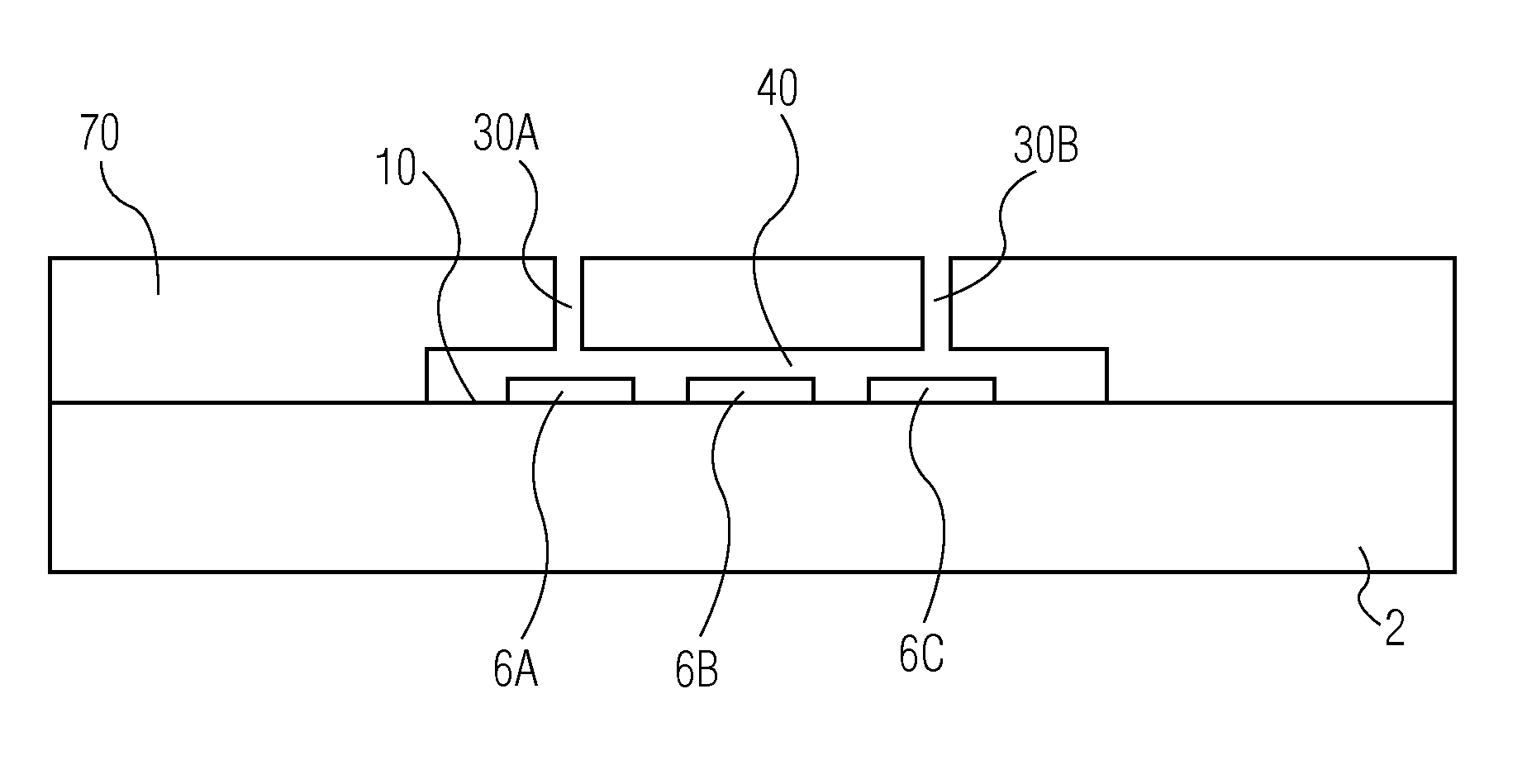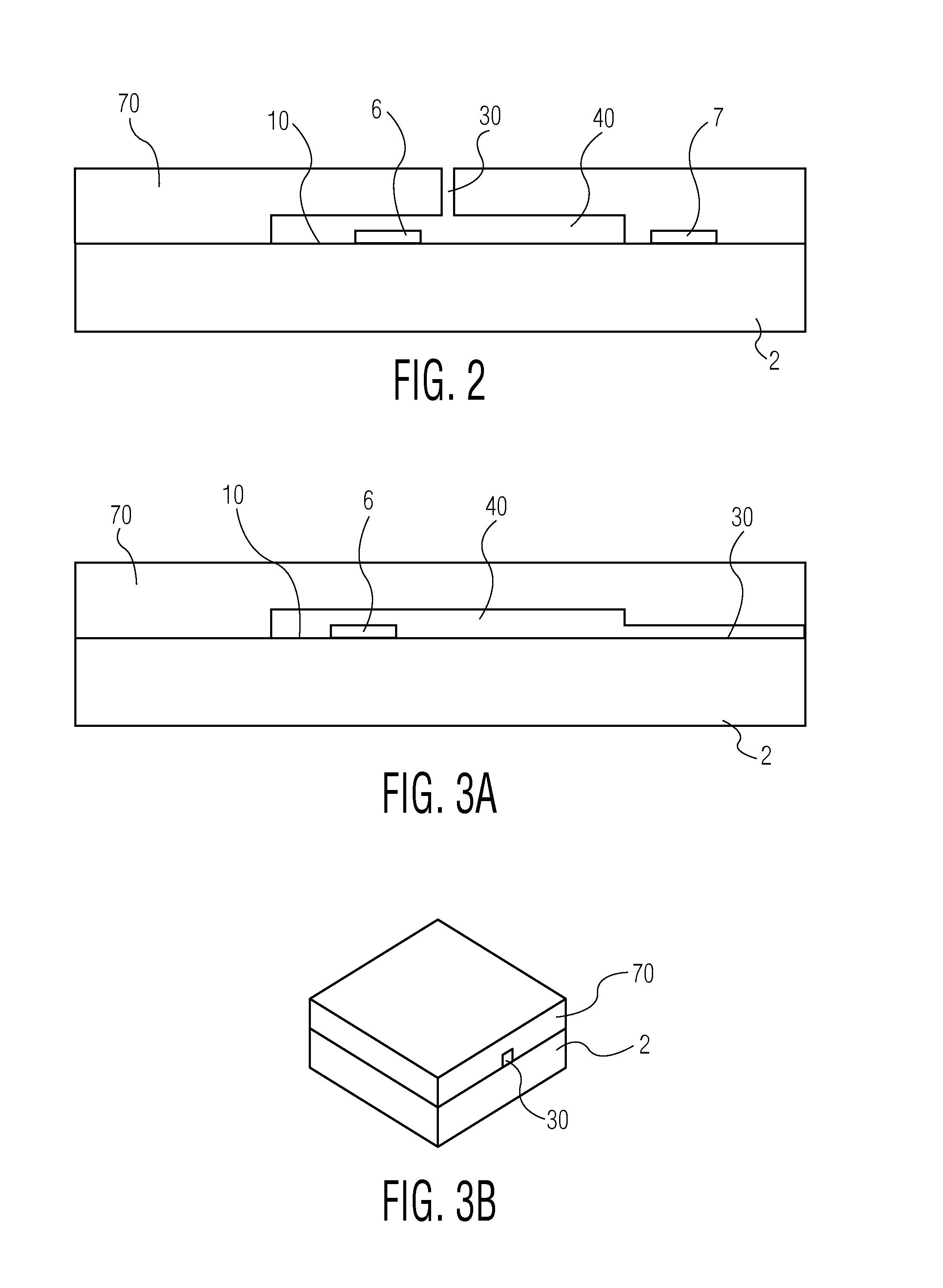Integrated circuit including an environmental sensor
a technology of integrated circuits and sensors, applied in the direction of fluid speed measurement, instruments, microstructured devices, etc., can solve the problems of difficult to control the exact position of the opening b, sensitive sensor features such as the deflectable membrane of a pressure sensor, and large portion of the substrate cannot be used, etc., to achieve convenient manufacturing of integrated circuits, enhance the ability of elongation of channels, and optimize matching
- Summary
- Abstract
- Description
- Claims
- Application Information
AI Technical Summary
Benefits of technology
Problems solved by technology
Method used
Image
Examples
Embodiment Construction
[0045]Embodiments of the present invention are described in the following with reference to the accompanying drawings.
[0046]A first example of an integrated circuit in accordance with an embodiment of the invention is illustrated in FIG. 2. The integrated circuit includes a semiconductor substrate 2, which may comprise, for example, silicon. The semiconductor substrate 2 has a major surface 10. An environmental sensor 6 is provided on the major surface 10. The environmental sensor 6 is a sensor that requires direct physical access to the environment surrounding the integrated circuit in order correctly to perform its sensing function. Examples of such sensors include pressure sensors, gas sensors (for example CO2 sensors) humidity sensors, and pH sensors.
[0047]In addition to the environmental sensor 6, further components can also be provided in the semiconductor substrate 2. For example, there can be provided control circuitry for operating the environmental sensor 6, memory for sto...
PUM
 Login to View More
Login to View More Abstract
Description
Claims
Application Information
 Login to View More
Login to View More - R&D
- Intellectual Property
- Life Sciences
- Materials
- Tech Scout
- Unparalleled Data Quality
- Higher Quality Content
- 60% Fewer Hallucinations
Browse by: Latest US Patents, China's latest patents, Technical Efficacy Thesaurus, Application Domain, Technology Topic, Popular Technical Reports.
© 2025 PatSnap. All rights reserved.Legal|Privacy policy|Modern Slavery Act Transparency Statement|Sitemap|About US| Contact US: help@patsnap.com



